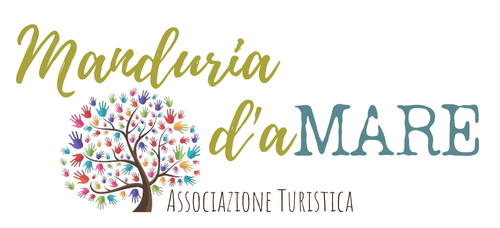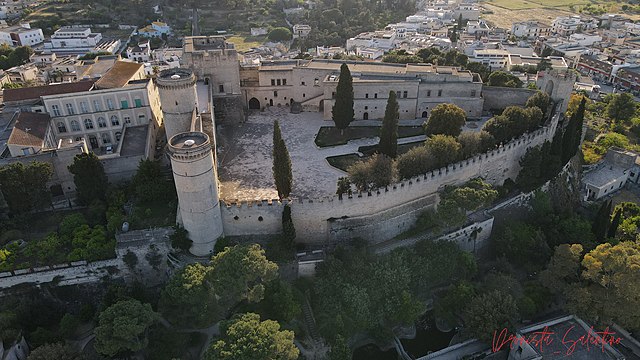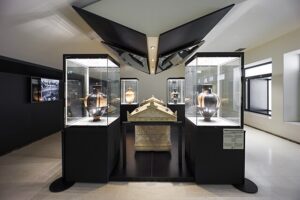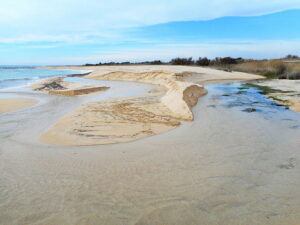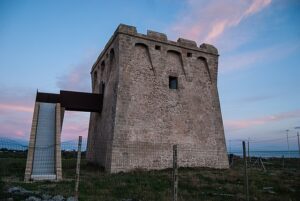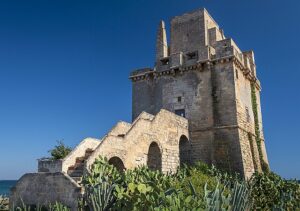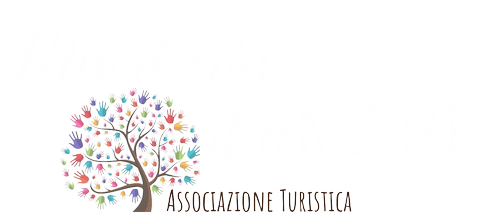The Castle of Oria (in the province of Brindisi) occupies Vaglio Hill, the highest point of the city, at about 166 meters above sea level, on an area inhabited since the earliest periods. In fact, this area was occupied by the Messapian acropolis, which likely built its walls around the 6th century BC. As is still partially visible a few hundred meters below, in Cattedrale square.
Given the strategic importance of the Oria territory (which often divided the Byzantine lands from those of the Lombards, with various nuances of control), although there is no archaeological evidence, the existence of an initial fortified nucleus during the Early Middle Ages must be presumed. Later (in the 11th century), there was likely some form of defense/control over the settlement and the surrounding territory carried out by the Normans, who feudalized the city. The square-shaped tower, later partially incorporated into structures from subsequent periods, is probably linked to this early nucleus of the Oria castle.
The castle underwent numerous modifications during the Federician period (1225-1233), to the point that it is generally referred to as the “Swabian Castle.” Some local sources claim that the “Stupor Mundi” himself built the castle, but it is more realistic to think that Frederick II expanded and modified it to suit new residential needs. In fact, we know that during his marriage to Yolanda of Brienne, the castle hosted numerous honored guests. Other important changes were made during the Angevin period, with the cylindrical towers known as the “del salto” (of the leap) and the “cavaliere” (of the knight) being attributed to this time. The original Norman-Swabian keep was heavily adapted, as was the entire structure, even during the 15th-16th centuries, to meet new defensive needs arising with the adoption of firearms. As a result, it was equipped with numerous gunports, some of which are still visible today. Finally, it underwent further additions, restorations, and reconstructions between the 19th and 20th centuries. In 1897, the castle was severely damaged by a tornado that struck the city of Oria.
The castle has had to withstand numerous sieges, such as those by Manfred, or assaults by Giacomo Caldora (1433) and Pietro de Paz (1504), who failed to capture the fortress. In addition to the guests at Frederick II’s wedding, the castle hosted Queen Maria d’Enghien (1407), her husband Ladislaus, King of Naples (1414), Princess Isabella of Chiaromonte, and King Ferrante of Aragon (1447). A very significant event of the time was the departure of Alfonso II of Naples from Oria to liberate Otranto from the Turks (1480). In more recent times, the castle has been visited by various personalities and scholars, both Italian and foreign, including Maria José of Savoy, Margaret of England, Cardinal Tisserant, members of the House of Habsburg, Theodor Mommsen, Paul Bourget, and Ferdinand Gregorovius.
On December 15, 1933, the Municipality of Oria transferred the castle to the Martini Carissimo family in exchange for Palazzo Martini, which was later designated as the Town Hall. The Martini Carissimo family restored the castle with the help of architect Ceschi. In recognition of the efforts made by the Martini Carissimo family, King Victor Emmanuel III of Italy granted them the title of Counts of Castel d’Oria, in addition to their existing titles of Counts and Patricians of Benevento.
